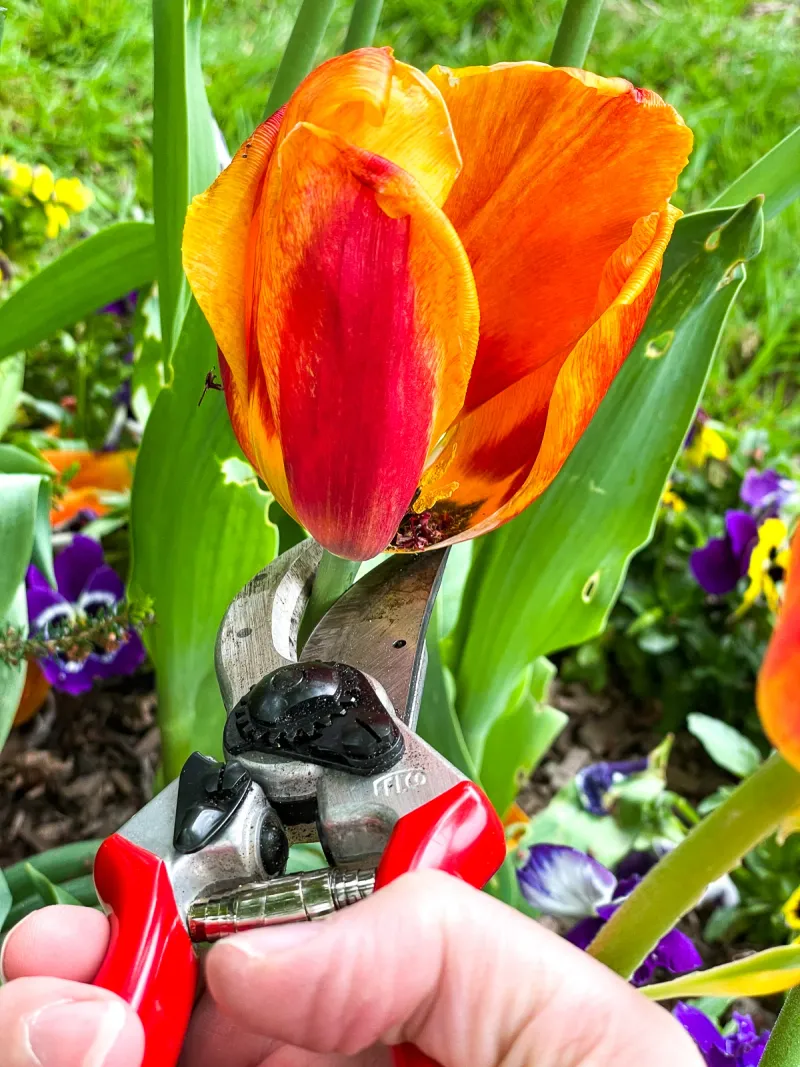Tulips are a beloved symbol of spring, known for their vibrant colors and graceful blooms. Cultivating them to flourish year after year requires special attention and care.
Here are 10 essential tips to help your tulips thrive and bring joy to your garden season after season.
1. Choose the Right Bulbs

Selecting the right bulbs is the first step to magnificent tulips. Look for healthy, firm bulbs free from mold or damage. Choose bulbs that are plump and heavy for their size.
This indicates they are full of the nutrients needed for a robust bloom.
Avoid any bulbs that feel soft or hollow. A diverse selection will add variety and color to your garden. Planting various types can also extend the blooming season, ensuring continued beauty in your garden.
Remember, quality bulbs are the foundation of a thriving tulip display.
2. Plant in Well-Drained Soil

Tulips thrive in well-drained soil, preventing root rot and disease. Before planting, test your soil by watering a small patch and seeing how quickly it drains.
If it remains soggy, consider adding sand or organic matter to improve drainage.
This simple adjustment can make a world of difference. Create a raised bed if your garden has poor drainage to keep your tulips happy.
Proper drainage is crucial to avoid waterlogged roots, which can hinder growth. Embrace this basic gardening principle for lush tulips.
3. Provide Full Sunlight

Tulips love the sun, and placing them in a sunny spot ensures abundant blooms. They require at least six hours of sunlight daily to thrive.
Observe your garden to identify the sunniest areas, and plan your planting accordingly.
While some shade can be tolerated, more sun equals better blossoms. The sunlight encourages strong, upright growth and vibrant colors.
Remember, the sunnier the spot, the happier your tulips will be. Position them perfectly to enjoy a stunning floral display.
4. Water Wisely and Sparingly

Watering tulips requires a careful balance. Overwatering can lead to rot, while too little can stunt growth. Aim to water them once a week, allowing the soil to dry slightly between waterings.
This routine mimics natural rainfall patterns, keeping your tulips healthy. Early morning is the best time to water, reducing evaporation and giving roots time to absorb moisture.
Always water at the base, avoiding wetting the foliage to prevent disease. This prudent watering strategy ensures vigorous growth.
5. Fertilize for Health

Feeding your tulips with the right fertilizer boosts their growth and bloom quality. Opt for a balanced, slow-release fertilizer, applied when planting and once again in early spring.
This provides a steady nutrient supply as tulips prepare to bloom. Organic fertilizers are a great choice, supporting soil health and sustainable gardening practices.
Ensure even application to avoid nutrient burn. Fertilizing nurtures strong stems and brilliant flowers, an essential step for thriving tulips.
6. Protect from Pests

Pests like deer and rabbits find tulips irresistible, so protecting them is vital. Use wire mesh or fencing to deter these hungry visitors.
Adding repellents or planting companion plants that pests dislike can also be effective.
Consider planting tulip varieties known for resistance to pests. Vigilance is key; regular checks for signs of nibbling will save your blooms.
By safeguarding your tulips, you ensure they can grow undisturbed and reach their full potential. Protection is prevention!
7. Deadhead and Prune

Pruning and deadheading are essential for healthy tulips. Once blooms fade, remove spent flowers promptly to prevent seed formation.
This redirection of energy helps strengthen the bulb for next year’s blooms.
Use clean, sharp tools to make precise cuts without damaging the plant. Deadheading encourages more vigorous growth and can even extend blooming time.
Regular pruning keeps your garden tidy and the plants healthy, allowing tulips to bloom again beautifully. It’s a gardener’s secret to success.
8. Mulch for Moisture Retention

Mulching helps retain moisture and regulate soil temperature for your tulips. Apply a layer of organic mulch, such as shredded bark, around the base of the plants.
This not only conserves water but also suppresses weeds that compete for nutrients.
Mulch breaks down over time, enriching the soil. Keep mulch away from the stems to prevent rot. This additional layer acts as a protective blanket, ensuring your tulips remain vibrant and healthy.
Mulching is an easy way to boost tulip vitality.
9. Rotate Planting Locations

Rotating the planting locations of your tulips prevents soil depletion and disease buildup. Each year, choose a new spot for your bulbs, ideally one that hasn’t hosted tulips recently.
This practice disrupts pest cycles and allows soil recovery.
Rotation supports vigorous growth and ensures fresh, nutrient-rich soil. It’s a strategy used by experienced gardeners to maintain a healthy garden.
Embrace this tip for long-lasting tulip beauty, and watch your garden flourish with renewed life annually.
10. Store Bulbs Properly

Correct storage of tulip bulbs post-bloom ensures their vitality for future planting. Dig up bulbs once foliage dies back, and let them dry before storing. Choose a cool, dark place with good air circulation.
Use breathable bags or baskets to prevent mold and rot. Label each variety for easy identification next season. Proper storage means your bulbs stay healthy and ready to plant when spring arrives.
This careful handling preserves the beauty and vigor of your tulip collection year after year.

